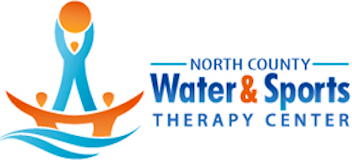Changing Your Perspective
Change can be a difficult thing for many people, but it is something that is always happening in life. Sometimes we choose the change that happens in our life, sometimes it chooses us. Most people would likely agree that COVID-19 has forced a change for nearly everyone in the world. And with this change, many are trying to take a step back to see the big picture, to figure out what we can learn from all of this. If you have been to our clinic, you know how much we love a good inspirational quote, so here is one from Sun-Tzu: “In the midst of chaos, there is also opportunity.” If you spoke to 100 different people right now and asked them what opportunity they have discovered because of COVID-19, you may get 100 different answers. If you asked a Physical Therapist, you may be surprised to hear that one of their answers is Telehealth Physical Therapy.
Our last blog gave a detailed description of Telehealth Physical Therapy and discussed the benefits associated with this format of healthcare. But now that we have been working with this platform for the past few months, we thought you might find it interesting to hear about how we at North County Water and Sports Therapy Center feel about Telehealth Physical Therapy. So, we asked our therapists three questions, and the results are quite enlightening.
1. What are some things that surprised you about telehealth?
Overwhelmingly, our therapists were (pleasantly) surprised with how easy Telehealth Physical Therapy has been in this time of change and transition. With only a few clicks on a computer, we are able to connect with our patients and begin our interventions.
Additionally, many of our therapists commented on how personal the telehealth visits feel. We are able to see and speak to our patients while they are in their home environment, we can see their individual needs, and we can connect with them one on one uninterrupted to help them progress towards their physical therapy goals.
2. What are some aspects of telehealth that you think can be more beneficial than in-person treatments?
All of our therapists recognize the benefits of seeing the patient perform their exercises in their home, using their own equipment, helping them problem solve how they can use what they have at home to do what they need to do to get the results they want. We can see how people sit or stand at their work station and make real time changes and adjustments in the moment and see immediately results from those changes, a luxury we do not have when we treat patients in the clinic. We can also see how our patients do movements that may cause them problems in their daily life such as lifting, getting in/out of bed, and getting down or up from the floor in their home and can train them in ways to be more efficient or effective in the moment.
We have also noticed how much more engaged the patient is during our telehealth sessions. When we treat a patient in the clinic, there can be a sense of “being treated” by the therapist, the feeling that someone else is making the patient better. It can be easy, especially in an open gym setting, to get caught up in conversation with the therapist or other patients and allow the treatment to become a passive experience, albeit still beneficial. With telehealth, the patient must do for themselves the things the therapist always used to do for them. This creates not only a greater accountability on the part of the patient, but also a sense of empowerment as the patient is now taking control of their condition and given the resources to help themselves feel better and meet their goals.
3. What have you learned in your experiences with telehealth that will now change or shape how you treat patients in person?
Here it is… the opportunity! As physical therapists, we regularly attend courses to learn how to better serve and help our patients, learning how to use different tools or different techniques to help our patients meet their goals and improve their overall function and quality of life. Incorporating telehealth physical therapy into our practice has been just as enlightening as a continuing education course.
All of our therapists agree that we will now be more aware of how we educate and give feedback and verbal cues to our patients, being more descriptive with words when teaching or correcting movement rather than only relying on our hands to correct movement. Education is a large part of what we do as physical therapists. Telehealth physical therapy has taught us that educating our patients and empowering them with knowledge and accountability, rather than relying on our hands, is imperative to the long term success of our patients.
We have also learned that telehealth is not only for pandemics when patients cannot leave their home. For the patient who is receiving in-person treatments in the clinic, a few telehealth treatments to allow the therapist to see their home exercise set up, sleep positions, or home workstation can make a huge impact in the patient’s ability to manage their own condition for the long term beyond completion of in-person treatments.
We at North County Water and Sports Therapy Center are focusing on the opportunity, not the chaos. Telehealth physical therapy is continuing to be a beneficial platform for our patients. If you have questions or are interested in getting started with telehealth physical therapy, please contact our office and we would be happy to discuss your options.
To see more check out https://www.waterpt.com/telehealth/

